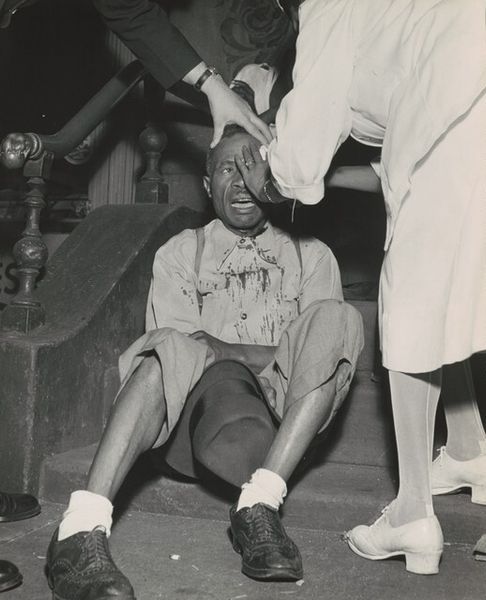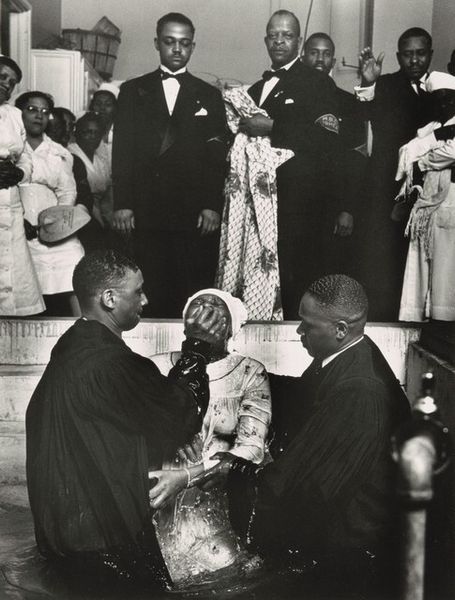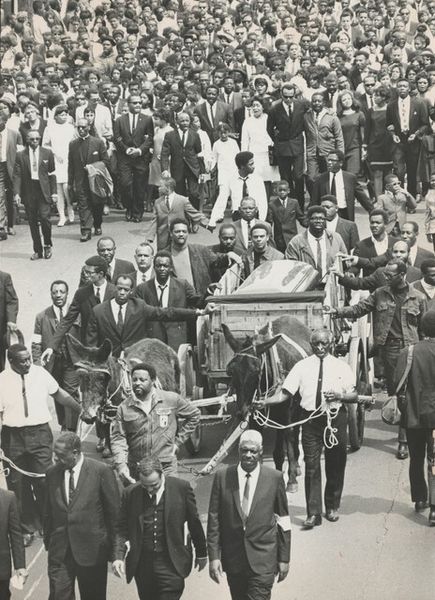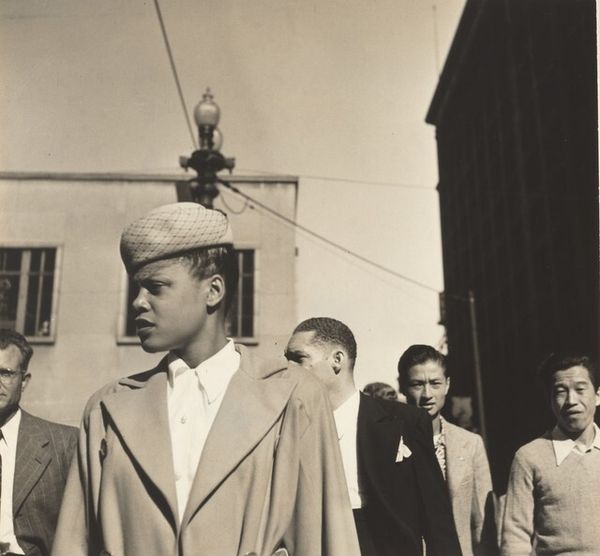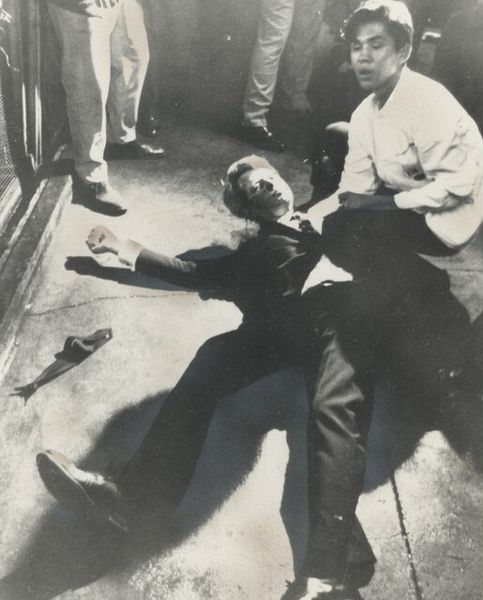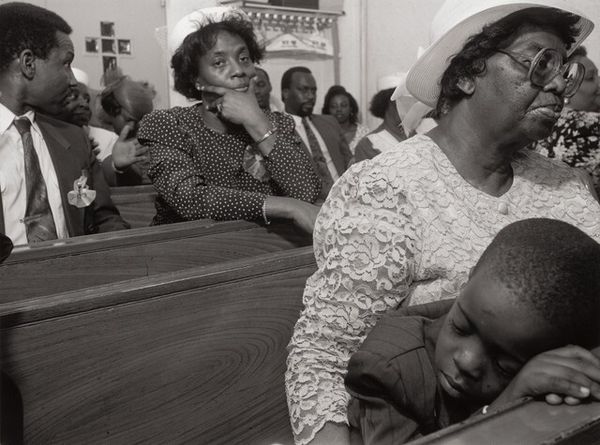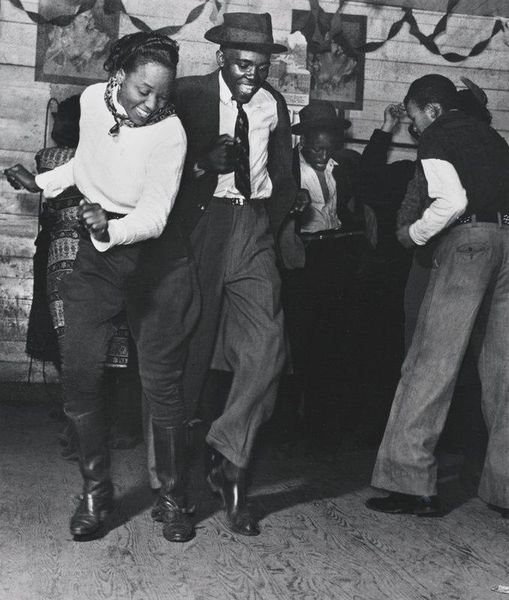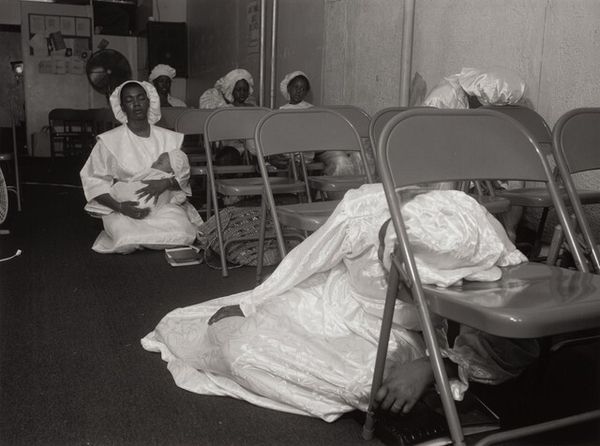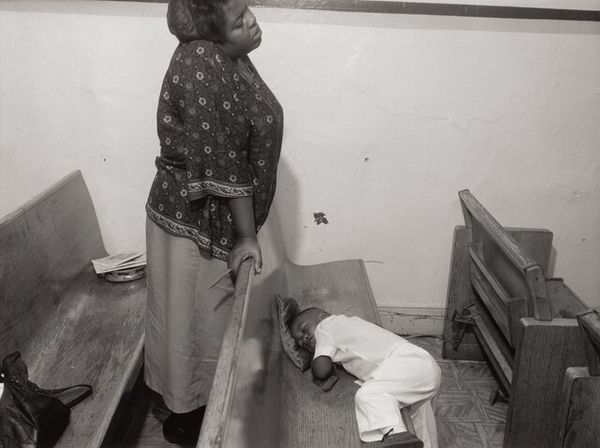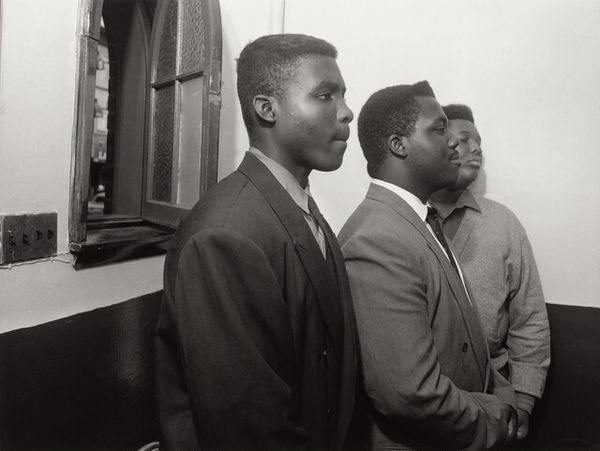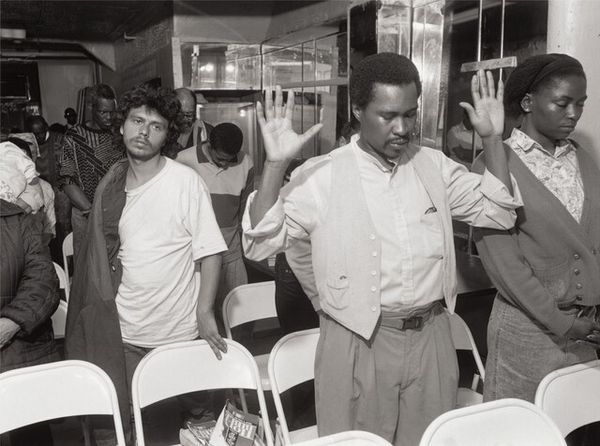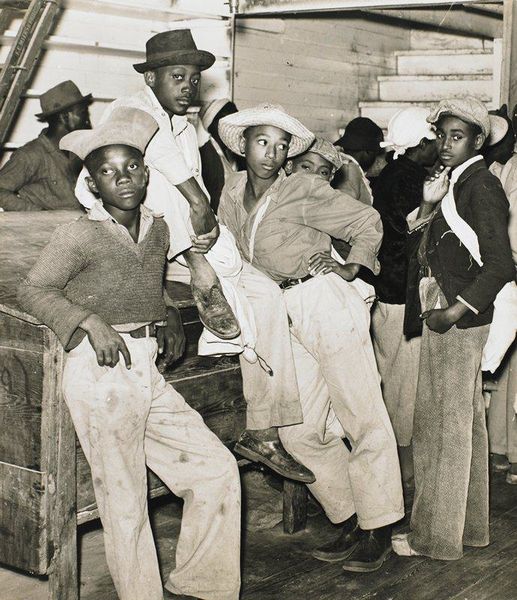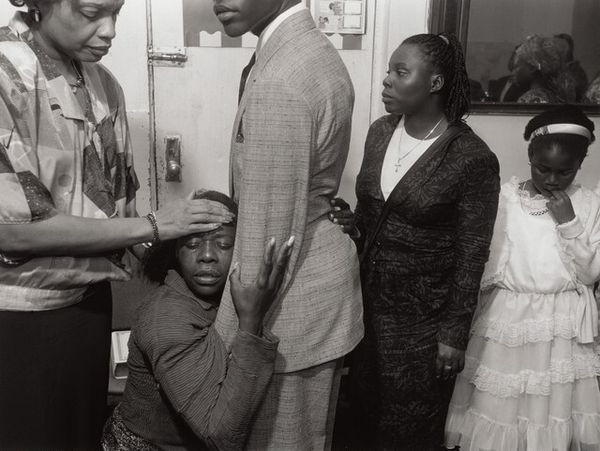
In mortuary Red and Herbie Levy study wounds on face of Maurice Gaines, a buddy of theirs who was found dying one night on a Harlem sidewalk 1948
0:00
0:00
photography, gelatin-silver-print
#
portrait
#
african-art
#
black and white photography
#
social-realism
#
photography
#
gelatin-silver-print
#
monochrome photography
#
monochrome
#
monochrome
Dimensions: image: 48.6 × 38.6 cm (19 1/8 × 15 3/16 in.) sheet: 50.6 × 40.5 cm (19 15/16 × 15 15/16 in.)
Copyright: National Gallery of Art: CC0 1.0
Editor: This gelatin-silver print from 1948 is by Gordon Parks, poignantly titled, "In mortuary Red and Herbie Levy study wounds on face of Maurice Gaines, a buddy of theirs who was found dying one night on a Harlem sidewalk." The expressions on Red and Herbie's faces are incredibly moving. How do you interpret the social narrative presented in this photograph? Curator: It's a stark image, isn't it? Parks, using the visual language of social realism, invites us to consider the violence and systemic injustices faced by Black communities. What strikes me is how Parks captures the intimate grief and vulnerability, yet positions this personal tragedy within the wider societal neglect of Harlem at that time. Think about the absence of resources, the history of redlining and how these contributed to an environment where such violence could occur. Editor: So you're saying the photograph is not just about this one death, but about a larger, oppressive structure? Curator: Precisely. It is about Maurice Gaines, but also about the countless other Black lives lost or diminished by structural inequality. Look at the composition - the downward gaze of the living, the wounds visible on the deceased. What is Parks drawing our attention to? What assumptions might Parks be challenging? Editor: Perhaps challenging the notion that these deaths are isolated incidents. He makes us see them as a consequence of something larger. I guess I didn't initially think of it beyond the immediate sorrow. Curator: It's easy to get lost in the grief, and that’s valid. But Parks masterfully layers the personal and the political. By compelling the viewer to witness this very private moment, he asks us to confront the broader systems at play, and I think consider our own complicity. Editor: This really reshapes my understanding of the work. It's a call for accountability as much as it is an observation. Curator: Absolutely. The photo becomes an artifact of resistance, demanding change. Editor: Thank you. I'll never look at this the same way.
Comments
No comments
Be the first to comment and join the conversation on the ultimate creative platform.
